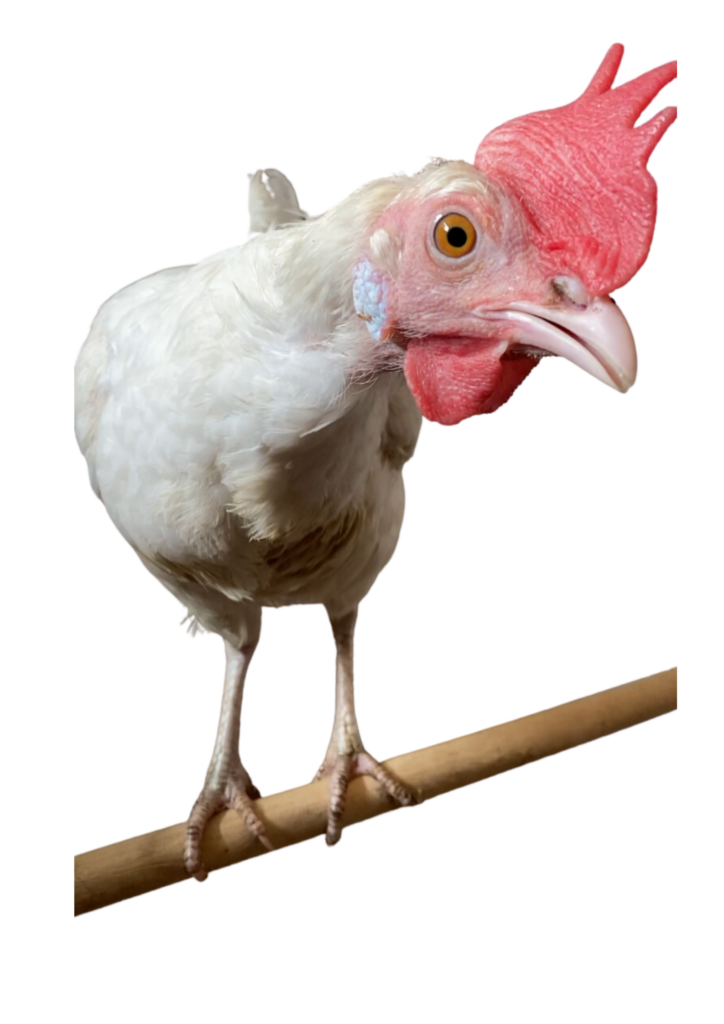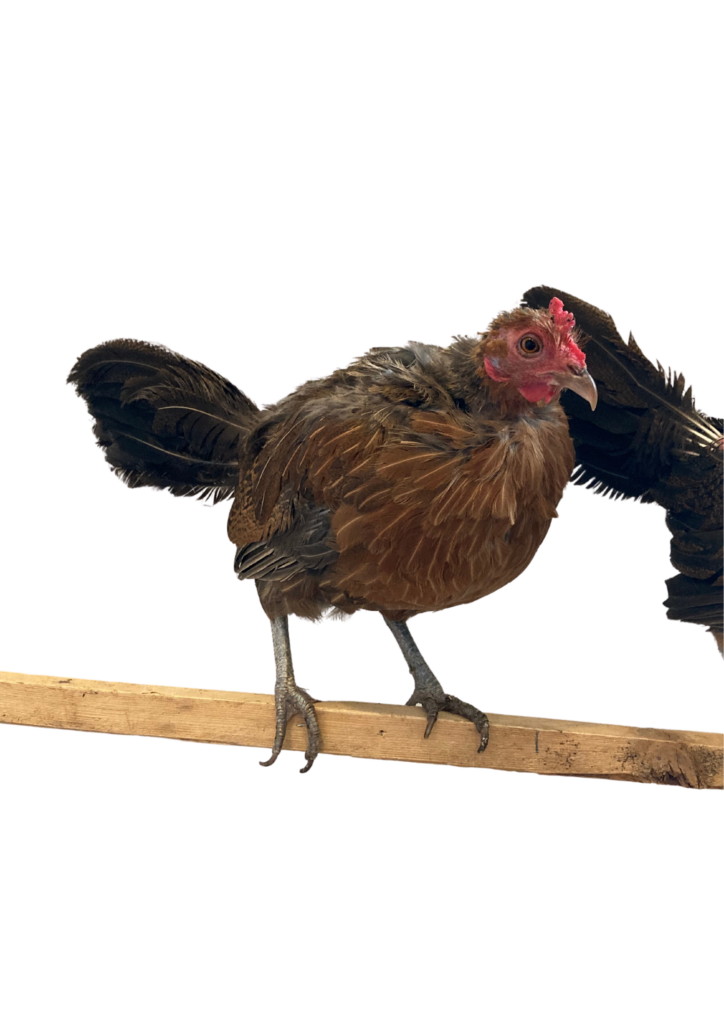With this study, I hoped to establish paths for future research by beginning to describe the human-chicken relationship. So, what have I found, and where to go from here?
The WL breed was most attentive: standing in close proximity to a human and orienting their head and body towards them is often called “contact-seeking behavior.” This behavior has previously been described in several domesticated species. Dogs have been shown to look to a human when faced with an impossible task, whereas wolves will not, clearly implying that contact-seeking behavior arose through the domestication process.
The WL breed was most eager to engage with the bowls: approaching them quickly and spending plenty of time near them indicates an eagerness to participate in this novel activity. Domesticated animals possess behavioral adaptations that make them better suited to human-made environments, and the WL group’s willingness to engage with the bowls appears to reflect this.
However, as I look back at this experimental design now, I am not surprised that the color of the bowl that they first approached was unaffected by the color I had previously shown them. There is no clear reason for the birds to connect color to a reward of some kind, simply because they observed me interacting with it. The WL breed was certainly observing me; however, I cannot know for sure whether or not they obtained any social information from this. Future studies should consider contexts where applying social information would be advantageous (e.g. seeing another individual respond positively or negatively to a novel object).
The domesticated breeds (both WL and LF) were unaffected by human presence: behaving consistently, regardless of human presence, indicates that these groups were habituated to my presence. If I had acted as a social buffer, my presence in the arena should have reduced their fear response, and therefore human presence did not appear to buffer the stress of these birds.
The behavior of the HF and RJF breeds depended on the context: exploratory behaviors were suppressed by human presence in the novel arena trials, but ambulation latency remained consistent between the fear response trials. In the latter test, the birds were in pairs, so perhaps the presence of a conspecific buffered their stress.
The difference in behavior between breed groups implies that the process of domestication does improve the quality of the human-chicken relationship.
So what??
Chickens are the most abundant domesticated animal in the world (with a global population of over 33 billion individuals as of 2020), and yet there is relatively little study of how they perceive the captive environment and the humans that they interact with daily.


In commercial farming, one of the regular stressors that chickens face is contact with humans. In this study I show that, in domesticated breeds, chickens can be familiarized to human presence. Research like this can help us better understand how to foster healthy human-chicken relationships. From here, we can strive to develop efficient familiarization procedures that are practical to implement in an industrial environment.
But this research also has a broader application. Agricultural animals are generally overlooked, both in the research community and in society. In an increasingly urbanized world, more and more people will go their entire lives without ever interacting with the animals that they consume. And when animal products are disconnected from the animals themselves, people think less about their welfare. Studies that describe agricultural animals as living, breathing organisms with a unique repertoire of cognitive abilities serve to reestablish and strengthen this connection, with the hope to inspire passion for further ethical welfare research and legislation.